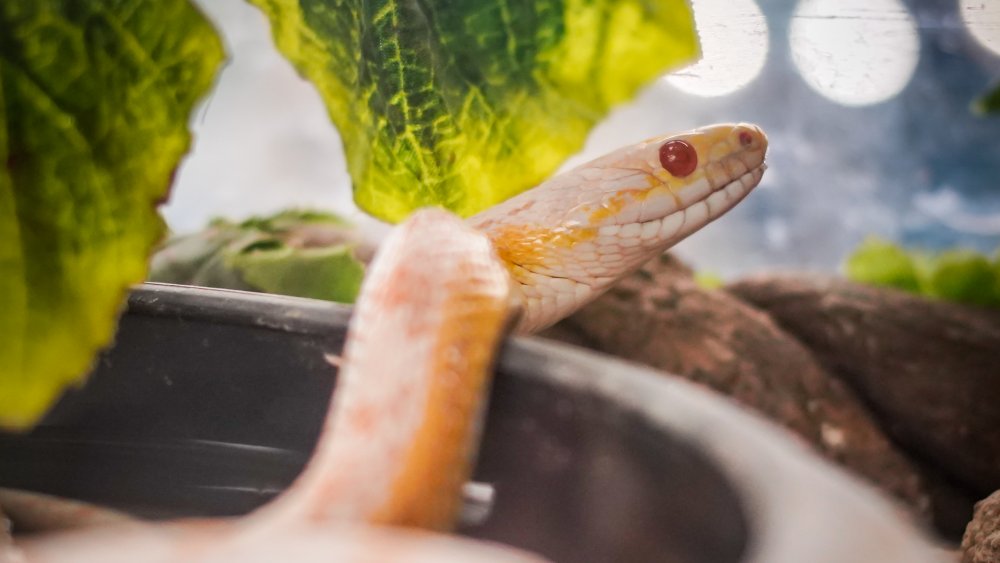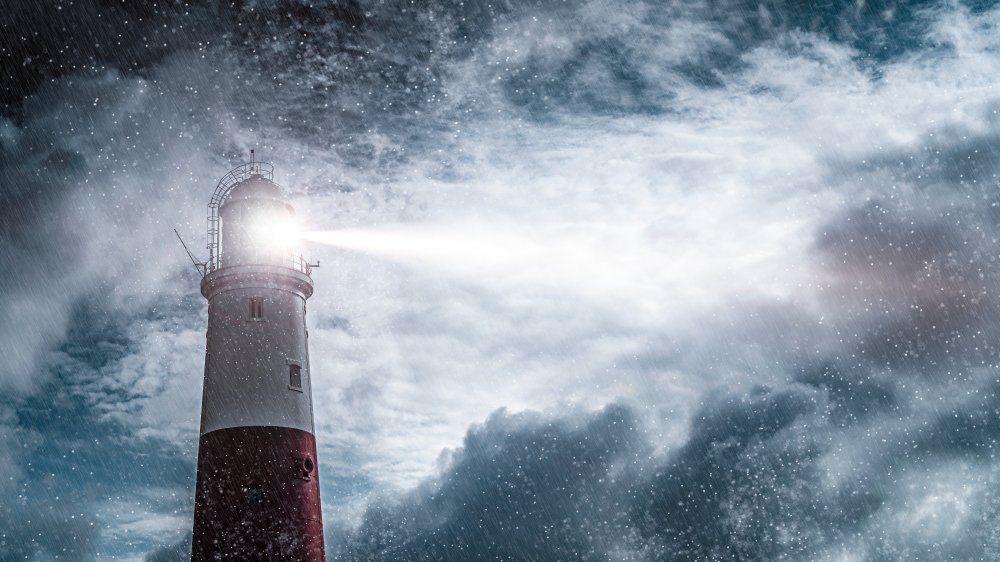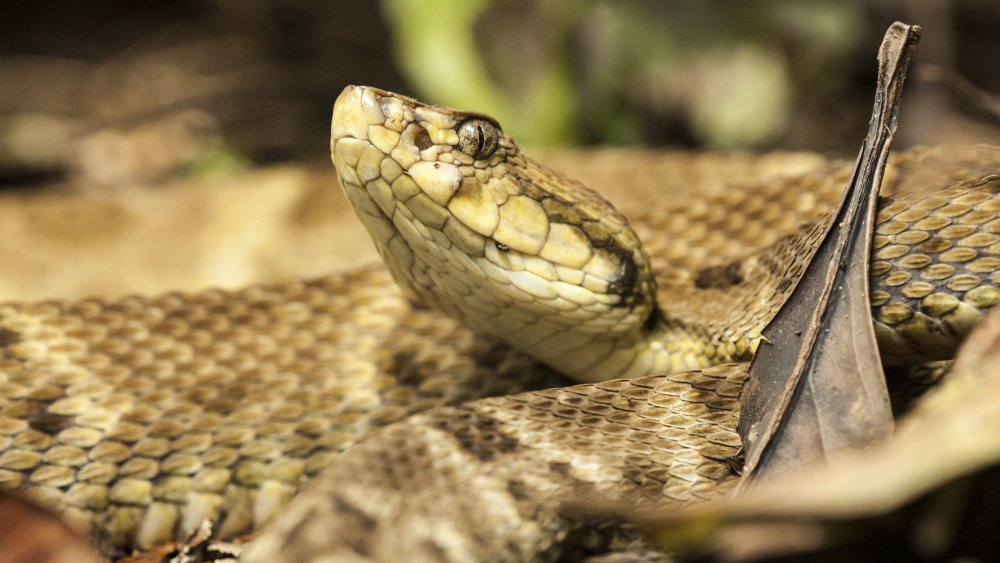Why Brazil Sends People To The Deadly Snake Island
Don't ever break the law in Brazil. If you do, they'll ship you off to Snake Island, a tiny plot of land 90 miles from the city of Sao Paulo that is infested with some of the world's most venomous snakes.
Okay, so that isn't entirely true. Brazil doesn't send lawbreakers to Snake Island, but nearly every inch of the 110 acres of land (that's just a little over 0.17 square miles) is absolutely slithering with scaly killers. According to Smithsonian magazine, some 2,000-4,000 golden lancehead vipers live on the island officially known as Ilha da Queimada Grande (which translates literally to Big Burned Island, though its colloquial name obviously suits it better).
The golden lancehead is one of the world's deadliest snakes, even more deadly than its cousins from whom it was separated when sea levels rose to create the island some 11,000 years ago. They got so venomous due to the lack of both predators and prey on the ground level. They were able to produce rapidly without predators, but they also had to evolve to kill quickly, since they can't track birds that fly off after getting bitten. The evolutionary solution was a powerful and fast-acting venom that kills birds almost instantly. In humans, it is said to melt flesh, liquefy insides, and cause very painful death. So, why does Brazil continue to send people there? Like any summit poking up out of the waves, Snake Island can be dangerous to seafaring vessels after dark.
It's a scary job, but someone has to run the lighthouse on Snake Island
So, as logic would dictate (and overrule the logic of staying away from a place where Atlas Obscura says you'll see a snake every square meter or so), there needs to be a lighthouse on the island to prevent the most nightmarish shipwrecks you could ever imagine. The lighthouse was originally maintained by a permanent operator, but a rather horrifying tale told by locals (mainlanders, obviously) justifies the switch to an automated system in the 1920s.
It is said that the lighthouse's last operator took his wife and three children to live on the island, which, we'll remind you, is called Snake Island. (Great parenting.) As the story goes, the family left a window open one night and a bunch of snakes slithered in through it, forcing them to flee. In the pell-mell rush to get to their boat, they were bitten by the snakes present in the branches and everywhere else on the island, and they all died what biologist Bryan Fry told Australian 60 Minutes is "a particularly painful death ... You're going to die screaming."
Now the lighthouse only requires an annual checkup, but such trips are obviously not without risk. Even the lighthouse itself isn't off-limits for the poisonous critters. Business Insider reported how workers found a snake slithering around equipment that journalist Rocco Castoro had just been sitting on.
The only other crazy people who go to Snake Island are researchers and pirates
As noted in Smithsonian, Snake Island is obviously of great interest to biologists and other researchers who are crazy enough to set foot on the place. They've found that a person bitten by a golden lancehead has a seven percent chance of dying. Its venom is so potent that there's still a three percent chance of death with proper medical treatment. What others call "melting flesh" and "liquified insides" can be chalked up to kidney failure, muscular tissue necrosis, intestinal bleeding, and brain hemorrhaging.
Golden lanceheads and their mainland relatives are all of the Bothrop genus, a group responsible for ninety percent of snake bites in the country, so researchers hope their work will lead to better treatment for their victims. Some believe that their venom could yield revolutionary pharmaceutical treatments for conditions like blood clots, heart disease, and other circulatory problems.
Scientists have to get special permission from the Brazilian government in order to visit Snake Island, and they're required to take a doctor with them. But, since there's a huge black market demand by kooky collectors — and even scientists hoping to be the first to nab a pharmaceutical patent — smugglers make clandestine trips to Snake Island. According to Vice, these so-called "biopirates" can make as much as $30,000 on a single golden lancehead. That's quite a hefty haul. But still, biopirates, you can't take it with you if the job goes awry.


